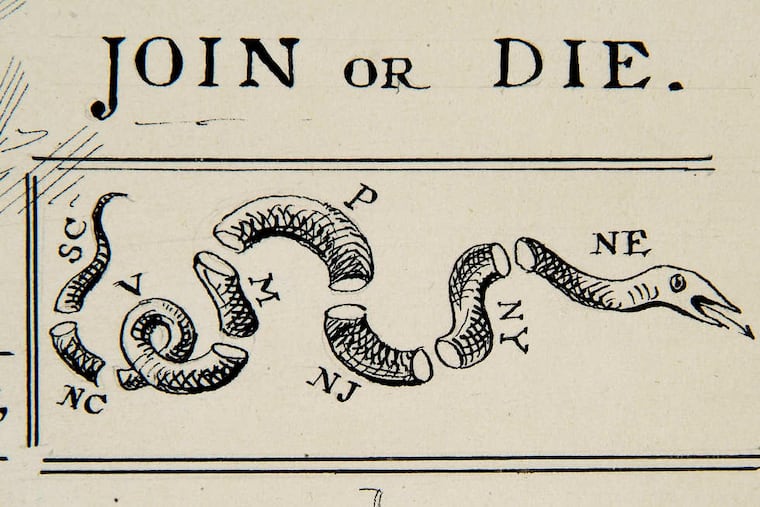There was no joking around with early political cartoons
The history of American political cartoons predates the founding of the nation. In 1754, Benjamin Franklin's famous "Join, or Die" poster - which many historians consider the first American political cartoon - appeared in the Pennsylvania Gazett

The history of American political cartoons predates the founding of the nation. In 1754, Benjamin Franklin's famous "Join, or Die" poster - which many historians consider the first American political cartoon - appeared in the Pennsylvania Gazette. Franklin hoped that his image of a snake cut into eight segments, representing the early colonies, would instill a sense of unity during the French and Indian War. The colonies recycled the illustration a decade later as tensions increased with Great Britain in the lead up to the Revolutionary War.
During the early 1800s, cartooning became a popular way for political parties, interest groups, and newspapers to express their opinions and rally support for a particular cause or candidate. As political differences mounted at midcentury, cartoons became increasingly biting and satirical. Unsurprisingly, themes of race, slavery, and states' rights dominated the cartoons of the Civil War and Reconstruction years. In fact, Franklin's "Join, or Die" was used by both the Union and Confederacy to advance their respective causes.
Political cartooning continued to grow after the Civil War as newspaper and magazine circulation boomed. However, the lampooning of political figures proved to be a contentious occupation for some cartoonists, such as Charles Nelan of the Philadelphia North American. Nelan came to the North American in 1901 following a successful stint with the New York Herald. He soon began lampooning the corrupt state of Pennsylvania politics, most notably with depictions of Samuel Pennypacker as a parrot. The cartoons implied that Judge Pennypacker - who successfully ran for governor in 1902 - was a tool within the political machine, answering not to citizens but to state Republican Party boss Mathew Quay.
In addition to his position as governor, Pennypacker was an avid historian and the vice president of the Historical Society of Pennsylvania. However, so insulted was Pennypacker by the parrot cartoon that he signed legislation in 1903 criminalizing the depiction of persons as animals. This was tantamount to a gag order for political cartoonists. Nelan and the North American responded to the law by representing Pennypacker and other prominent state officials as beer steins, oak trees, turnips, and other non-animal forms. Despite the enmity between Pennypacker and cartoonists, the law was not enforced during his tenure, and was repealed at the end of his term in 1907.